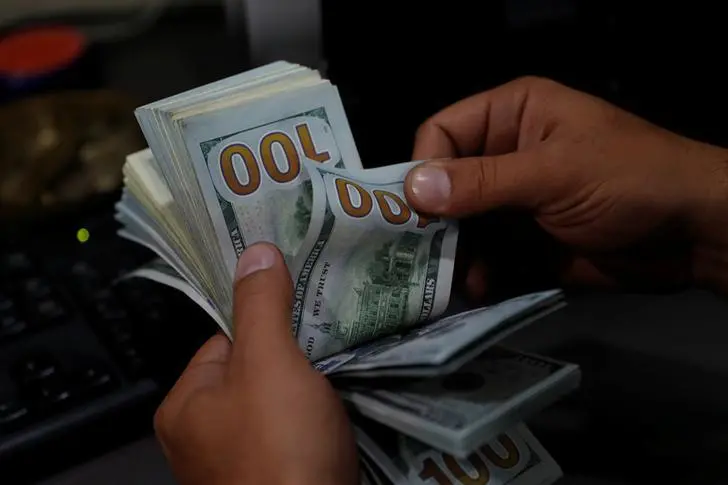PHOTO
LONDON- The dollar rose on Wednesday amid jitters that surging energy prices could spur inflation and interest rate hikes, and as traders awaited U.S. jobs data for clues on the timing of Federal Reserve policy tightening.
The Reserve Bank of New Zealand lifted its official cash rate for the first time in seven years, but its resolutely hawkish tone only seemed to add to expectations that the Fed would follow suit and the kiwi dipped as U.S. yields rose.
The kiwi was last 1% weaker at $0.6889 and the Australian dollar fell 0.6% to $0.7243.
The euro was pinned below $1.16 and last bought $1.1567, scarcely higher than the 14-month low of $1.1563 it struck last week.
The yen fell to a one-week low of 111.79 per dollar in tandem with a rise in Treasury yields, which can draw investment flows from Japan. It was within range of the 18-month trough of 112.08 that it visited last Thursday.
The greenback has won support as investors brace for the Fed to begin tapering asset purchases this year and lay the ground for an exit from pandemic-era interest rate settings well before central banks in Europe and Japan.
"A pretty classic haven bid into the dollar, helped along by new longs entering the market after we reclaimed a number of important technical levels in early trade during the Asian morning," said Michael Brown, senior market analyst at Caxton FX.
"Higher Treasury yields are helping to provide further support for the USD, while also denting the attraction of the JPY, which continues to demonstrate a close negative correlation with Treasury yields. Again, the FX market is taking its cues from equities, which in turn are taking their cues from bonds - higher yields denting the attraction of growth stocks."
Fed funds futures markets 0#FF: are priced for rate hikes to begin around November 2022, but anticipate rates topping out at just over 1% through most of 2025 even though Fed members project rates reaching 1.75% in 2024.
Longer-dated U.S. yields rose on Wednesday and the U.S. dollar index was up 0.4% at 94.354.
U.S. non-farm payrolls data due on Friday is seen as crucial to informing the Fed's tone and timing, especially should the figures wildly impress or disappoint. Private payroll figures, a sometimes unreliable guide, are due around 1215 GMT.
A large miss on market expectations for around 428,000 jobs to have been added in September could dampen expectations for Friday's broader figure, which is forecast at 473,000.
'BULLISH COCKTAIL' FOR DOLLAR
ING's G10 FX strategist Francesco Pesole said a "bullish cocktail" was being mixed for the dollar, with the U.S. yield curve steepening again and a hawkish set of "dot plots" at the Fed's September meeting.
The dot plot is a chart that indicates Fed policymaker expectations for where interest rates will be in the future.
"Add in any strong employment data and market expectations may swing towards Fed projections of a steepish three-year tightening cycle starting next year," Pesole said in a morning note.
"Thus look out for ADP data today. Any upside surprise to the 430k consensus figure could lift short-term U.S. rates and the dollar."
Nervousness about higher energy prices dragging on growth or flowing through to broader inflation blunted the support that the surge had lent to commodity-linked currencies.
The Canadian dollar eased from a one-month peak and the Norwegian crown pulled back from a three-month top.
Another big mover among commodity currencies was Norway's crown, which fell over 1% to 8.6438 per dollar.
Sterling has recovered some of last week's sharp sell-off against the dollar, but lost momentum through the Asian session and it fell 0.4% to $1.3570, hovering just below Tuesday's three-week peak on the euro.
In New Zealand, a 25-basis-point rate hike and familiar hawkish tone from the central bank did little to support the currency, despite expectations for further hikes in November and February.
(Reporting by Ritvik Carvalho; additional reporting by Tom Westbrook in Singapore; Editing by Alex Richardson and Mark Heinrich) ((Ritvik.Carvalho@thomsonreuters.com; +44 2075429406; Reuters Messaging: ritvik.carvalho.thomsonreuters@reuters.net; Twitter @ritvikcarvalho))












